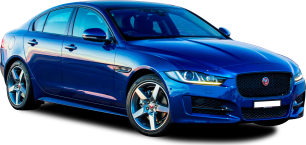The cabin feels spacious in both rows and the rear row can comfortably fit those who are above six foot (182cm) with a caveat.
Despite being optioned with the '4+1' seating, don't be fooled; the middle rear seat is nothing more than extra room for the out-boarders as the rear centre console takes up all legroom a middle seater might need. Not even a kid will be happy in the middle for long.
Amenities in both rows are good. The heating/cooling and massage functions on the front seats are great and the four-zone climate control means everyone can get comfortable.
Access to both rows is surprisingly good with doors that open widely but the rear footwell lip is high and the well narrow. So, if you have clunky boots on you may feel clumsy getting into position.
My seven-year old found the doors heavy to open and it took him a while to realise he didn’t have to slam the doors shut thanks to the soft-close feature.
Individual storage is better than you usually get in a sports car but all cubbies still fall on the shallower side. There are four cupholders, four drink bottle holders, a glove box, a middle console and two small net map pockets. There is also a dedicated phone cubby housing the wireless charging pad.
The boot aperture is wide and it’s super easy to reach things in the back thanks to the liftback lid but that sloping roofline means you lose out on height for larger items.
Stack bigger things right behind the back seat if you want to fit them. Capacity is below average compared to its rivals at 460L.
The rear row has a 40/20/40 split to open up storage options and there is a very deep cubby underneath the floor with the tyre compressor/repair kit.
Device charging options are great with a total of four USB-C ports, a wireless charging pad and three 12-volt sockets to choose from.
The upgraded multimedia system looks fantastic and is user-friendly. The built-in satellite navigation is simple to use and the multimedia system, head-up display and instrument cluster can be highly customised.
The base Panamera model now comes standard with wireless Apple CarPlay and Android Auto. Connecting to the CarPlay is easy and the connection remains seamless.
The optional passenger display panel allows the front passenger to control their climate and seat comfort, see a duplicate of the instrument panel or just watch a movie on a long trip.
The screen has a privacy filter, which means the driver can’t see what’s on it and is thus not a distraction. However, no one in my family bothered to use it.













































